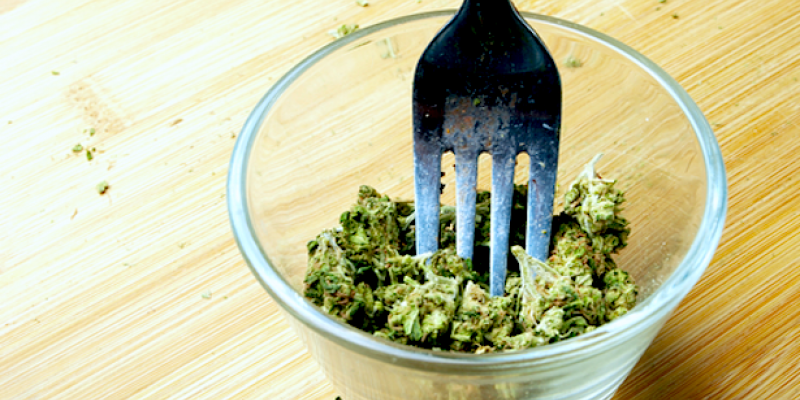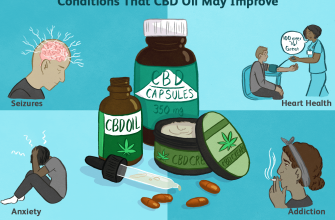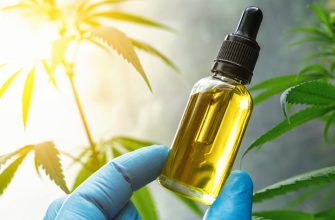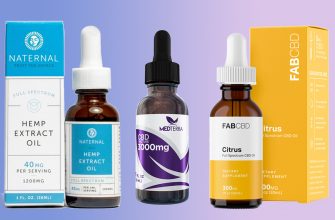Why use marijuana at all?
Doctors still avoid prescribing marijuana to patients, even in countries where marijuana is legal and medical cannabis is sold in pharmacies. Why this happens, you can read in the article “reasons for doctors to refuse cannabis”. As a spoiler: not because cannabis is harmful, but because it hasn’t been researched enough.
Research, however, is ongoing. The article “10 cases when hemp can save your life” lists the wonderful properties of cannabis:
- THC can treat inflammation and even cancer (according to a study funded by the US government and published in the prestigious scientific journal “Journal of Biological Chemistry”);
- THC has a positive effect on the brain, preventing its degenerative changes, and also causes the release of antioxidants and increases the body’s endurance (study conducted at the Institute of Molecular Psychiatry at the University of Bonn);
- THC has an anticonvulsant effect (study published in the British Journal of Pharmacology);
- Cannabinoids reduce the risk of skin cancer (according to research by the Tokyo Metropolitan Institute of Public Health, the results of which were published in the journal Pharmacy and Pharmacology);
- THC may prevent heart attack (study published in the journal Biochemical Pharmacology);
- THC helps fight HIV (more on this in the Journal of Leukocyte Biology);
- Cannabis treats PTSD (post-traumatic stress disorder), in the US this property of marijuana is used quite widely;
- Cannabis helps treat osteoarthritis (according to a study published in the medical science journal PLOS One);
- Cannabis helps donor organs survive transplantation (according to a study published in the Journal of Neuroimmune Pharmacology);
- Cannabis promotes brain recovery after injury (study published in the Biochemical Society Transactions and previously posted on the US National Institutes of Health website).
In addition, cannabidiol (CBD) helps to lose weight and improve metabolism in obese patients
What is the best way to use marijuana?
Smoking marijuana has a predictable effect, and it’s also easier to control. The effect of eating marijuana is stronger, which is just perfect for many; however, it is less predictable and difficult to control. In addition, it is not always clear when it will come.
If you’re contemplating how to dose edible marijuana, it’s best to know ahead of time a couple of ways to improve your cannabis experience.
There are so many methods and mechanisms of marijuana use, but it is important to understand how much marijuana you really want to use, how much cannabinoids will enter your circulatory system. The two main ways to use marijuana are known to all:
- Smoking through many different devices, such as a pipe, bong or bulbulator, cigarette roll or joint, smoking through a foil straw, etc.
- Eating edible marijuana along with cannabis-infused foods: cookies, brownies, butter, pasta, sandwiches, candy, ice cream, coffee, wine, and even curry, the list goes on.
The ways of smoking and eating marijuana are almost endless, but both methods – eating and smoking – have their own advantages and disadvantages, and also differ in the type of effect they entail.
Let’s look at what distinguishes these methods from each other, and why the method must be selected individually: what is ideal for one person may seem terrible to another.
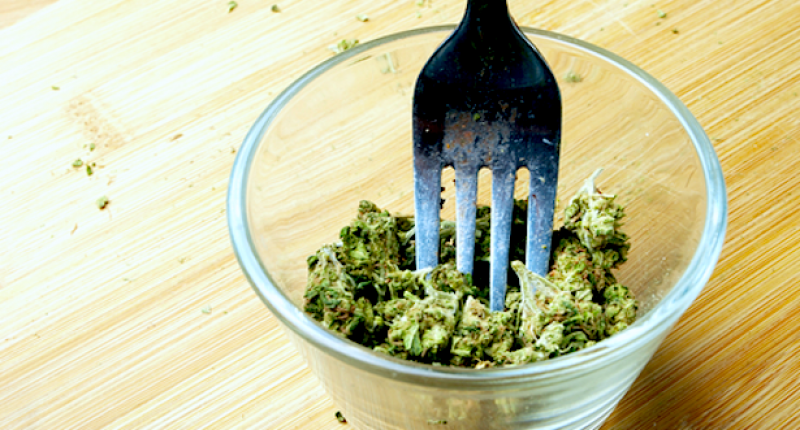
Suction
Anyone who has not only smoked marijuana, but also eaten it, knows the difference between these ways of using marijuana. Eaten marijuana is absorbed longer, but the effect of it is much stronger and lasts longer. You may ask why a handful of cannabis candy works so much better than a series of puffs from a bong or a few hand-rolled cigarettes. The answer to this lies in how cannabinoids are absorbed from the body.
When smoking, THC, figuratively speaking, goes to the brain in more direct ways. In the case of ingested marijuana, THC is metabolized in the liver, where it is converted to 11-hydroxy-THC. This metabolite successfully crosses the blood-brain barrier and therefore entails a much stronger effect.
Beginning, duration and strength
When smoking marijuana, the effect occurs almost immediately after a puff. Depending on the type and variety of marijuana, how stressed you are, and how often you smoke, there may be immediate relaxation or euphoria, creativity, or even buoyancy. These effects begin to wear off and disappear over the next hour or so. With such a quick start, you can immediately understand how much THC you just consumed, how much is normal, when you go too far, and when to stop. So, when smoking, it is easier to control the amount of THC.
It is quite another matter to eat marijuana. Assimilation of ingested marijuana takes time, so the first psychoactive effect can be felt between 30 minutes and two (sometimes three) hours. The effect remains for several hours, depending on the quantity and quality of cannabis eaten. Because of this significant time lag between the time the marijuana meal was eaten and the first effect felt, it is extremely easy to overdose. You need to wait at least an hour before concluding whether the marijuana you eat “works” or not, but it’s better to wait even longer and not “get it”: it’s likely that you just need more time, and what you eat will work, but later. If you eat two or three more doses in addition to what you have already eaten, the psychedelic effect may not be quite as expected. And the sensations in the body may not be pleasant – instead of lightness and relaxation, an effect may come that is difficult to be prepared for: the trip can turn into a real test, a borderline psychedelic experience.
This is very common among people who have little experience in eating marijuana. If you decide to eat, for example, “magic cookies”, you need to start with small doses and be patient, not tempt fate. Take a dose that you can handle and wait until you feel the full effect of what you eat before taking more. And better – wait until the end of the trip, draw the necessary conclusions and take more next time.
Dose difference
When it comes to the dosage of edible marijuana, ten milligrams can be considered a sufficient dose of THC. This is convenient for using marijuana and avoiding an overdose. For example, a cannabis chocolate bar might contain one hundred milligrams of THC divided into ten squares. In this case, it’s very easy to know the amount you want to take, assuming, of course, that your bar comes from a trusted and trusted source. This does not mean that the normal dose is 10 milligrams at a time: the optimal dose for an individual depends on many factors that can affect the speed and strength of the effect. For example, marijuana eaten on an empty stomach can work faster and stronger than if you had a heavy meal first. It is also very important how much you weigh.
Even professional pharmacies have been known to have problems with the accuracy of the dosage of marijuana in products, with consumers reporting that the same product can vary, be “weaker” or “stronger” depending on the batch. The rules prescribe trying and creating products with accurate and verified dosages; however, there is a real reason to be careful when using even pharmaceutical products – to start with small doses and be patient while waiting for the effect to begin.
Eating or smoking: which is better?
Smoking a plump cigarette is a very relaxing act, and sometimes almost a ritual: the process of rolling is quite meditative; here you are sitting back in your chair, surrounded by your friends, and your cigarette flickers, almost like a candle, and flares up and sparks magical conversations. Meanwhile, there are growing concerns among doctors about whether it is safe to inhale the by-products of burning marijuana: they can be toxic and even carcinogenic. This has not yet been fully studied, so it is impossible to draw a definite and final conclusion. There is also speculation that the anti-carcinogenic properties of cannabis may combat the negative side effects of smoking. Despite this, many smokers switch from cigarettes to vapes: it is safer, less combustion products are consumed with this method of smoking.
When marijuana is used in food, there are obviously no combustion products. However, how marijuana will affect the body depends, among other things, on the type of food in which the “grass” is mixed. For example, the constant eating of brownies, cakes and biscuits is, of course, extremely tasty, but also extremely nutritious, in other words, sweet, fatty and harmful. On the other hand, it is possible to add cannabis to healthier foods such as guacamole or vegetable oil to create healthy salad dressings. The possibilities for creating healthy marijuana meals are almost endless.
Overdose
An overdose manifests itself differently depending on whether you smoke or eat marijuana. If you smoke, you will most likely just relax, let go of your problems, put the half-smoked joint on the ashtray and lie down on the couch to your heart’s content. If you overeat marijuana, the situation will be different. Most likely, you will not be ready for the effect that will come (and even more, it will begin to intensify). If this happens to you, the most important thing is not to panic. Sit down, take a few deep breaths and relax. Remember that soon you will sober up and everything will be fine.

